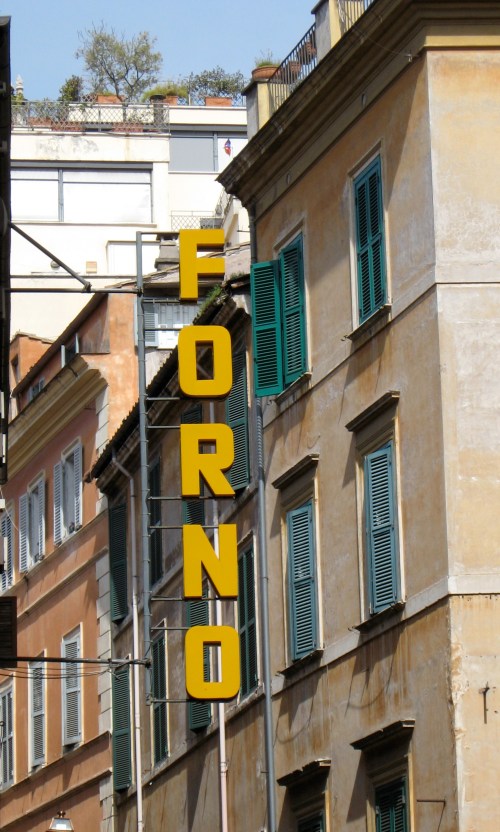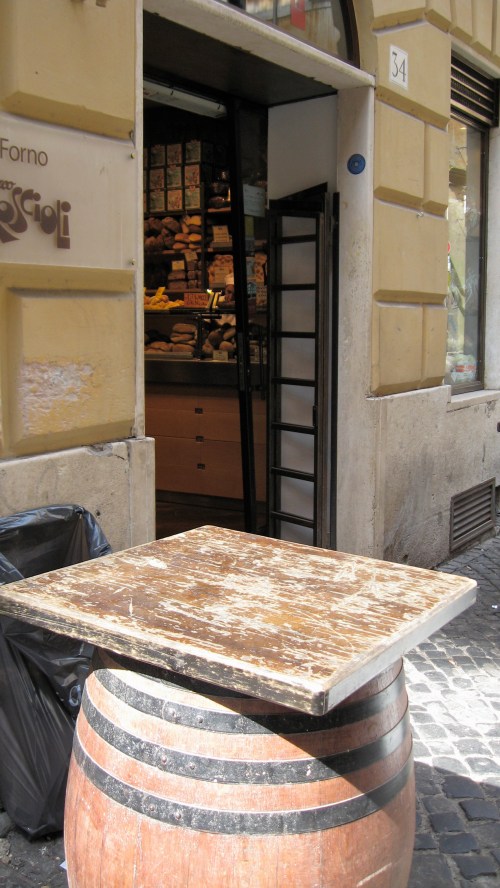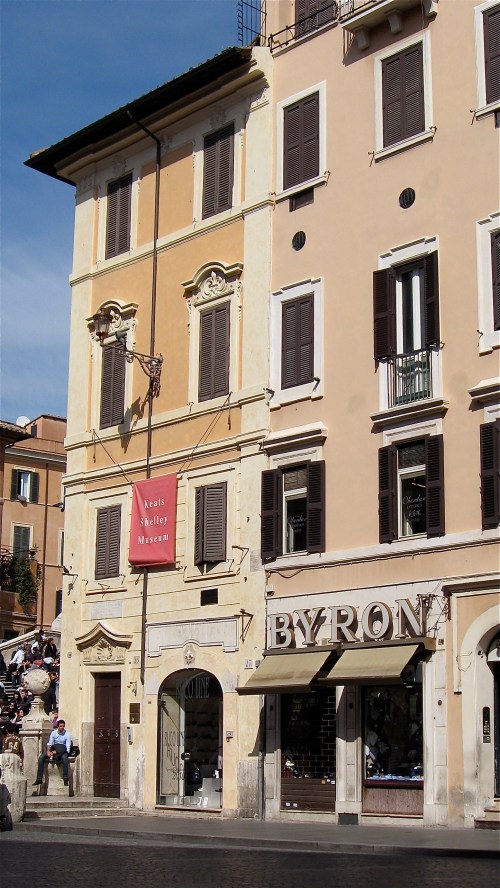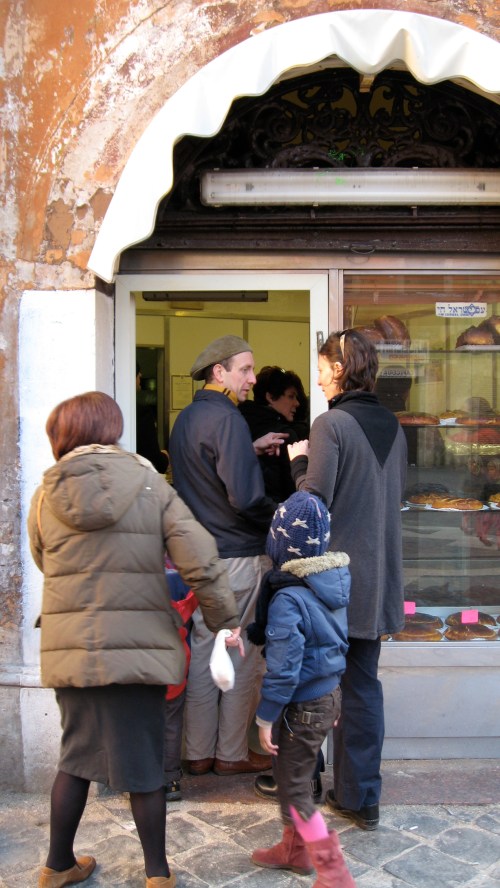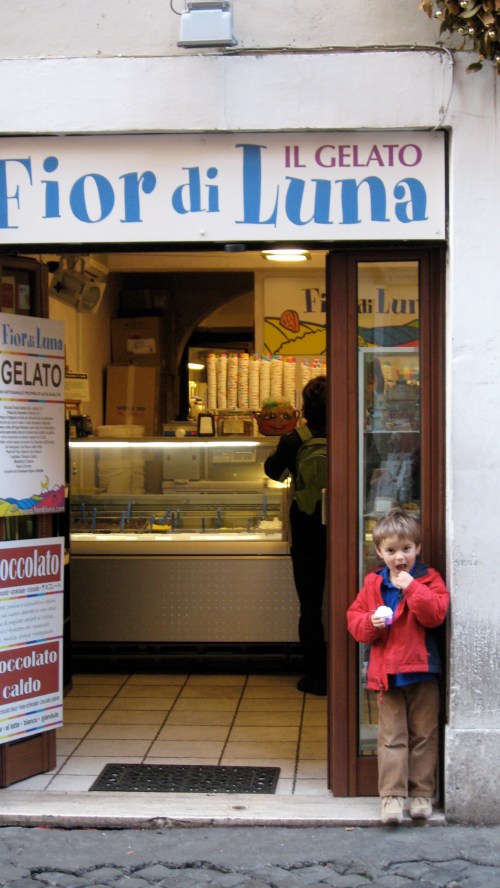My dissertation, that is, is done. Sadly, so is our packing.
We’ve been saying goodbyes to good good friends here in Rome, and will leave on Thursday. It’s an anticipated sadness and loss, so it’s one that ebbs and flows, comes and goes at unexpected moments. Life goes on, too, as do the food and wine discoveries. Why did it take 9 months for me to learn about this vino vivace I’m sipping right now? Monsupello, an off-white slightly fizzy wine made with Pinot Nero grapes (skins taken out), from the Pavia region in the north of Italy. The reason I didn’t know about it sooner is that Jeannie and Valeria, friends and moms of Jack’s friends, discovered it at our local enoteca—wine shop—and bought it all up. But with the new season, new caseloads have come in, and we’re all drinking it. I had it first on Jeannie’s balcony in Trastevere while Jack and Nico “went fishing” with coat hangers over the edge. Then I had it two nights later at Valeria & Andreas’ apartment. Two Roman veterinarians, they told us about their dreams of opening a restaurant in London or Berlin that serves good basic Roman cuisine.
Late, too, I found out about Necci, a wonderful little cafe that does everything from breakfast pastries to toy-swaps for the kids with aperitivi for the parents. Jeannie, Sarah, and I went to Pigneto, a Roman neighborhood outside of the city center, last week, on a mission to taste the artisanal cornetti (Italian croissants). The chef, a British guy named Ben, is one of those admirable chefs who uses only local and seasonal ingredients and who is reviving old ways of making things. Jeannie and I had chocolate cornetti and agreed that they were the best we’d tasted in years. Light crunch to the pastry flakes—dark, warm chocolate within.
Necci is a fun place with great deck seating, kid-friendliness, a sense of humor, and delicious food. Some pictures.
After a long, leisurely hour and two cappuccini at Necci, we walked down a central neighborhood street that has an open air market during the morning. I bought a melon, a bagful of cherries, and susine plums.
Then we wandered with our fruit-heavy bags back to Sarah’s car, stopping in little shops along the way. One of them was a funky second-hand store, with everything from a vintage Singer sewing machine—from the 1910s—to Pokemon cards. Now, if I had known then what I know now, I would have bought a huge handful of those cards. For the past few days of goodbyes Jack has been cathecting all of his mixed emotions onto his carte di Pokemon. I buy a pack for him (and they’re exploitatively expensive!) and he gives them all away as regali. Or his more cunning friends convince him to trade 4 for 1. I tell him I won’t buy him anymore, and he cries and says he doesn’t want to go to school or see his friends again. I say, “I know you’re sad that we’re leaving. Let’s talk about what you like about Rome” and he’ll say, “I like the buses and the carte di Pokemon.” It’s been a sad time for him, because he’s had such a wonderful year. He learned Italian and finally feels comfortable with his Italian friends and teachers. He loves his school. He loves life here at the Academy where there are always friends available right next door. So he channels his emotions into the things he can grasp at and consume until we go away (friends are too complicated for these operations): Gormiti (little Italian elemental action figures), Pokemon cards (which, he doesn’t know, are everywhere), and ciambellini (the mini doughnuts they make at the Kosher cafe we stop in almost every morning before school). We all do it. I’m drinking more coffee because I know I won’t taste coffee like this in the New World. I’m putting one more slice of mozzarella on my plate because it might be my last for years. I’m getting a cup of pistachio gelato even if Jack doesn’t want any. We’re trying to squeeze in one more coffee-date, playdate, late-night conversation with the wonderful friends we’ve made here. And I’m trying to drink in the views and sounds of Rome so that I won’t forget any of it, so that it won’t become muted and hazy when we get back to “real life.”

























